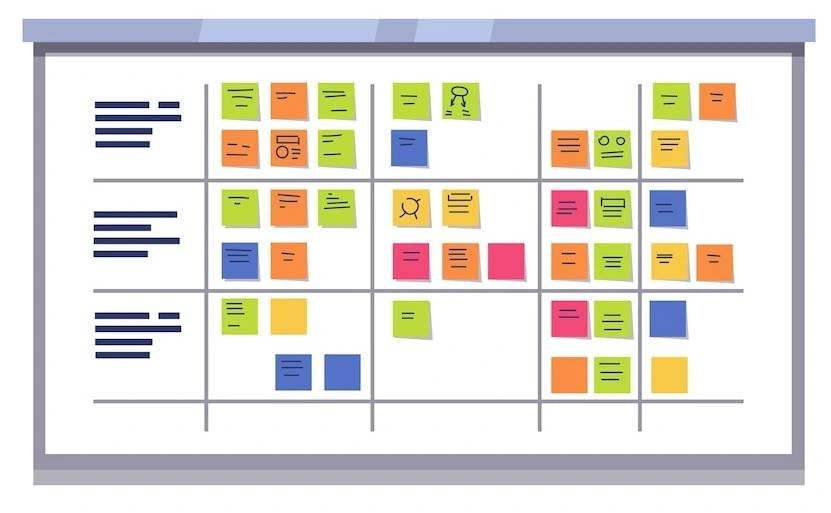I am often asked the question on when someone should use Agile to deliver Salesforce and Data Projects; I could go the typical consultant way and say: ‘well…it depends!’ – but of course, I don’t want to do that! However, before I could either give you the answer or a framework to approach this question, we need to look at a few aspects of it. If you’re an impatient person (trust me, I was one!), wait till the next article on this topic, I plan to summarise a matrix which can guide you.
Now, let’s get back to the topic!
I am assuming you know what Agile and Salesforce are, but if you’re not familiar with either of them, please click on the links which provides a good summary and have been page ranked well by Google too. 🙂
I hope you made it back to this article without vanishing into a Wikipedia or a Youtube Rabbit hole! Nevertheless, let’s begin by using a scenario to explain this topic easily.
Scenario
Imagine you have taken up a new role in Acme Inc as the Salesforce Programme Manager. Acme Inc has a lot of impatient stakeholders – I mean what are the chancesD!? They would like you to hit the ground running with a Greenfield Salesforce project that also involves large scale data migration. The CTO asks you the million dollar question – do you think we can get this done in 6-8 sprints? This is your first meeting with the CTO and obviously you would like to make a good impression, I get that!
You carefully drink a sip of your coffee from the vending machine and gather your thoughts (As a side note, you’re mildly annoyed that the machine creates a lot of waste for making one cup of coffee!).
Firstly, the CTO has assumed that this project will be implemented using an Agile methodology. Your job is to validate this assumption. Any seasoned Project Manager like you will have the knack of buying a little time before coming up with a more informed response. You know that very well, so you respond to the CTO by saying that from your experience 6-8 sprints are enough to deliver such projects, but… you saw a few requirements which may need some further looking into. You carefully dodge that bullet without introducing that anchor bias around 6-8 sprints.
The key is to have a long pause after that ‘but…‘ which is dramatic enough for the CTO to notice.
The Next Steps
You’re thinking about the CTO’s question as you walk back to your desk with your brand new laptop from Danny – the IT Lead. You assure yourself that you know well about the framework to choose between Agile and Waterfall – the Stacey Matrix, and have used it in your previous projects.
You’re discussing about the question with Ed, who’s a curious Salesforce Project Analyst sitting next to you. You have just met Ed, but he’s not shy of asking questions. He looks at you and says, ‘What the heck is a Stacey Matrix?’ You patiently explain to Ed that the Stacey Matrix is a way of looking at management strategies to solve complex problems.
You say: “Firstly, you classify the problem into the following buckets- Simple, Complicated, Complex and Chaos. You do this based on 2 factors:
- uncertainty on what needs to be happen to solve the problem
- uncertainty around how it should be implemented.
The sweet spot for Agile are the problems which fall under the Complex category. These are projects in which you roughly know what needs to happen to solve an issue – but require feedback to solidify the design. In addition, you don’t know how to implement the full solution.”
Ed is not convinced, and he asks you to explain it using the Salesforce project you’re about to do. You love a good challenge as it improves the quality of the outcome, so you ask Ed a few questions, in an effort to do an initial classification of the project based on Stacey Matrix. Ed knows a lot about this project, as he has been a part of the initial discovery exercise.
- Is this a Greenfield project? i.e. Are we planning to implement a brand new Salesforce instance?
- Does it involve large scale data migration?
- Do we to integrate Salesforce with any other applications?
- Are the stakeholders open to using Salesforce’s out of the box features? Do we expect them to ask for big customisations?
- Can we use release some features of the Salesforce quickly to a set of users? As an example, the sales team can start using the Lead to Opportunity functionality for new businesses straight away?
- Do we have a strong Salesforce Product Owner and Scrum Master in the team?
- Is the CI/CD pipeline working efficiently?
You ask Ed the above questions, to which he says that he must attend a meeting now, but he has promised to come back within an hour with responses to these questions. Meantime, I suggest you set up your new laptop and schedule that meeting with the CTO to provide an update on the timeline ;-). Good luck!
We will cover the responses and whether we can do this project using Agile methodolody in the next part- feel free to add more questions while we are waiting for Ed to come back from his meeting!
References
- Stacey RD. Strategic management and organisational dynamics: the challenge of complexity. 3rd ed. Harlow: Prentice Hall, 2002.
- Dinnie Muslihat. (2018) Agile Methodology: An Overviewat: https://zenkit.com/en/blog/agile-methodology-an-overview/ [Accessed 02 Jan. 2021]


